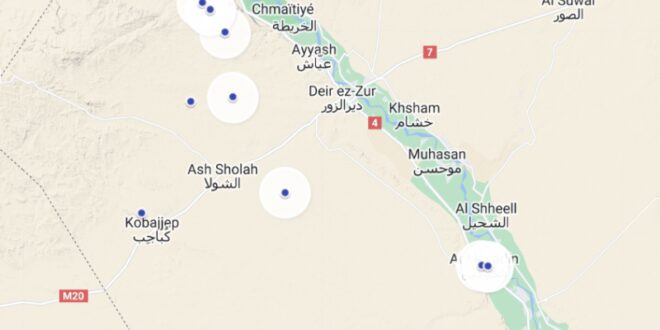ISIS carried out at least 33 confirmed attacks in February in the Homs, Hama, Raqqa, and Deir Ez Zor governorates. These attacks killed at least 35 pro-Assad regime soldiers and 25 civilians and wounded at least 33 more soldiers and civilians. There were also eight high quality* attacks during the month. February saw the greatest number of ISIS attacks since April 2023. This is the first time there have been two consecutive months of more than 30 confirmed ISIS attacks since March and April 2023, during the peak of ISIS’s attacks against truffle hunters. However, unlike those two months, most of the attacks conducted this January and February targeted security forces. Violent activity continues to be concentrated in Homs province, where the group has been conducting a high tempo of offensive activity against regime positions since late 2023. As in past months, ISIS continues to shift its specific focus within Homs in response to regime and Russian pressure. While January saw a concerted effort to pressure the string of checkpoints southeast of Palmyra, ISIS spent much of February attacking regime positions in the Taybeh area north of Sukhnah and the Jubb Jarah area north of Palmyra.
ISIS’s use of significant high quality attacks, like fake checkpoints and urban assassinations, as well as its success in seizing regime positions, have all continued from January into February. This elevated level of both the quantity and quality of attacks comes despite continued Syrian and Russian jet strikes targeting ISIS hideouts and defending against attacks on fortified positions. In return, ISIS has lost at least 18 fighters this month, according to local researcher Zain al-Abidin. This follows 12 killed and eight captured in January. This level of confirmed ISIS losses is unprecedented during the group’s insurgency, and points to the possibility that the organization has significantly bolstered its ranks with new recruits over the past two years.
ISIS began to claim Badia attacks consistently for the first time since 2022 during their global “And Kill Them Where You Find Them” campaign in January. This higher rate of claims has continued into February, when the group claimed six of attacks in central Syria.
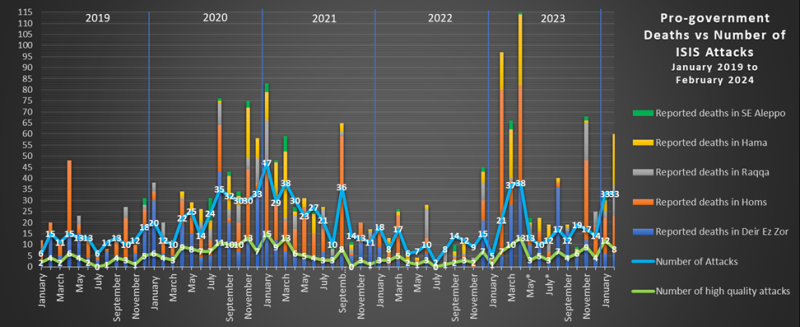
*Indicates attacks in Damascus City claimed by ISIS. Two additional IED attacks occurred in Homs City in June 2023 that went unclaimed but were suspected to be conducted by ISIS.
Confirmed ISIS attacks increased slightly in Homs (15) and Hama (7) and remained largely steady in Deir Ez Zor (7) and Raqqa (4). There were no confirmed attacks in southern Aleppo.
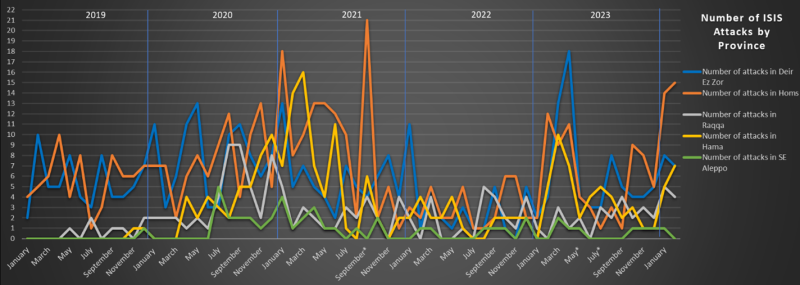
Deir Ez Zor and Raqqa
ISIS expanded its low-level insurgency within the urban belt of Deir Ez Zor in January, when it conducted three assassinations of local security members. Sleeper cells continued this trend in February, carrying out two assassinations of local pro-regime fighters inside Mayadin city. The group also continued to target shepherds and truffle hunters in western Deir Ez Zor during February.
On February 11, local pro-regime Facebook pages reported an “intense firefight between armed guards protecting truffle hunters and ISIS in the vicinity of the al-Bishri asphalt mines.” Two civilians and one police officer guarding them were wounded. On February 14, another group of truffle hunters were targeted near Shoula, with no casualties reported. On February 22, ISIS militants attacked a group of shepherds in the Masrib countryside. On February 24, three local National Defense Forces (NDF) men were killed when their vehicle hit a mine, also in the west Deir Ez Zor countryside. That same day, assailants on a motorbike assassinated an NDF fighter inside Mayadin city. Four days later, a second NDF fighter was assassinated in the city. Lastly, on February 27, ISIS attacked two shepherds and their local militia guard in the Masrib countryside. The guard was killed and one shepherd wounded.
In Raqqa, ISIS continued its low level but high quality series of attacks along the two major roads leading west and south of Resafa. ISIS cells remain in control of the Zamleh area, which they captured from regime forces on January 19, and have effectively cut off the Kawm-Resafa highway that runs through Zamleh (though large enough military convoys can presumably still travel through).
On February 1, ISIS militants attacked a regime checkpoint east of Resafa, wounding two soldiers. On February 21, militants established a fake checkpoint on the highway west of Resafa and successfully kidnapped two soldiers. Three days later, multiple cells launched attacks across the Resafa-Sukhnah highway. One of these attacks targeted regime positions west of Zamleh, the other two occurred in Homs. The next day, on February 25, 14 civilians were killed and eight wounded when their truck hit a mine in the southeast Resafa desert while they were searching for truffles.
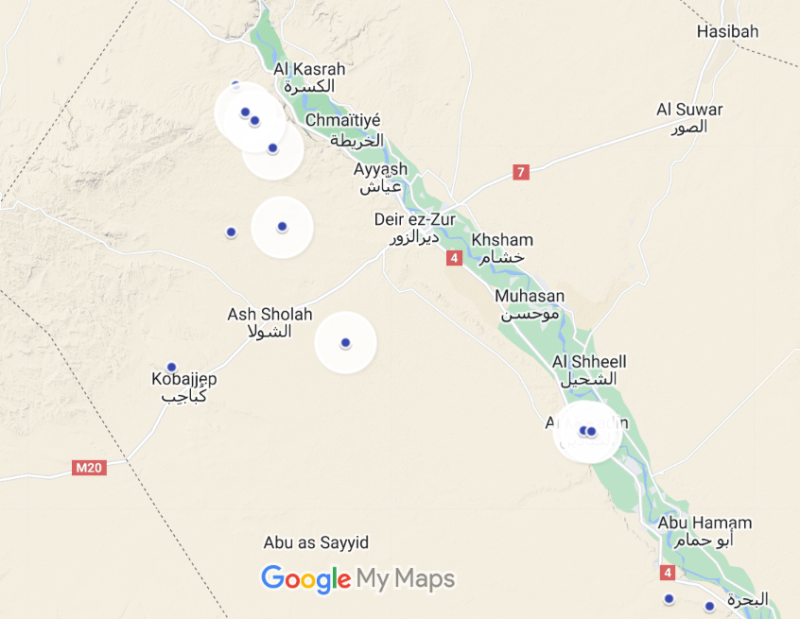
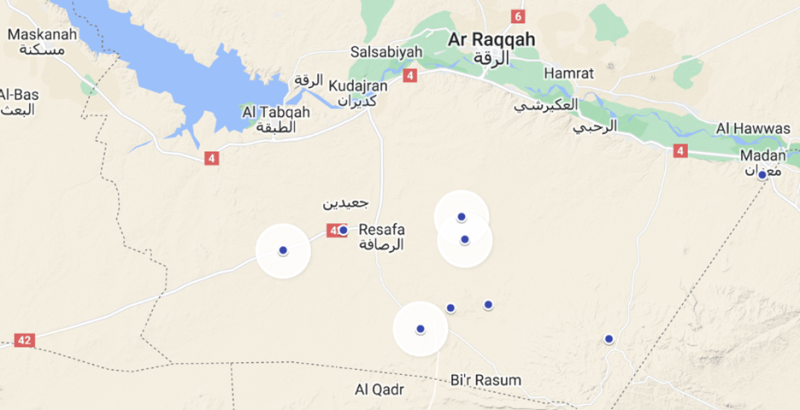
Map of locatable ISIS attacks (highlighted) in Dier Ez Zor (top) and Raqqa (bottom) in February 2024 alongside all other attacks in January 2024.
Homs
ISIS activity in eastern Homs decreased in December, but remained focused around the Doubayat Oil Field, which the group had temporarily captured in November. January likewise saw most ISIS activity concentrated in this area, though the group also expanded operations west into the desert just south of Palmyra and Arak. In February, ISIS largely abandoned the southern Palmyra front, likely because of pro-regime ground and air operations, and shifted its focus to the Taybeh sector north of Sukhnah and the Jubb Jarah mountains north of Palmyra.
On February 5, pro-regime social media pages reported ISIS attacks north of Sukhnah and in an unspecified area around Palmyra. According to journalist Zain al-Abidin, ISIS cells carried out three attacks that day. One targeted regime forces south of Arak (i.e. the Palmyra area), one occurred northeast of Sukhnah, and the third northeast of al-Kawm. Al-Abidin claimed these attacks were intended to divert regime resources from the ongoing operations around Wadi Doubayat, south of Sukhnah. On February 10, pro-regime Facebook pages reported the death of a soldier in the Palmyra area. Zain Al-Abidin again provided more specific details of the incident based on his local contacts. He claimed that ISIS militants launched an attack south of Arak, successfully capturing six regime checkpoints, killing two soldiers, and wounding three allied foreign fighters of the Iran-backed Liwa Zainebiyoun. Russian jets intervened and, according to al-Abidin, there were at least eight confirmed ISIS deaths at the end of the battles.
The next day, ISIS began to pressure the village of Taybeh, which lies on the Sukhnah-Resafa highway. Pro-regime social media users reported an ISIS attack was repelled on the village, while Zain al-Abidin claimed that three regime militiamen were killed and wounded when the militants nearly captured the village. Russian jets again intervened.
On February 12, at least one soldier was killed and four wounded when their truck hit a mine or improvised explosive device (IED) in the Jubb Jarah area while on patrol. On February 14, ISIS again targeted Taybeh. Pro-regime social media users reported another attack thwarted, while local community pages announced the deaths of two soldiers killed “during an attack on their military point.” The next day, ISIS claimed responsibility for an attack on a regime barracks “west of Sukhnah,” claiming to have killed and wounded three. The claim corresponds with local reports of one soldier’s death in the Sukhnah area. On February 17, ISIS claimed to conduct an IED attack on a regime patrol “north of Palmyra.” According to Zain al-Abidin, the attack occurred southeast of Palmyra, near Talila, and left one dead and three wounded. On February 18, local pro-regime Facebook pages again reported the deaths of two soldiers killed in another ISIS attack on Taybeh.
On February 23, ISIS began attacking civilians in east Homs. That day, two civilians were killed by an explosive device in the Bala’as Mountains area, while a group of shepherds were attacked in the Jubb Jarah region. Four shepherds and two of their guards were killed. On February 24, a group of truffle hunters disappeared west of Huwaysis, in the Jubb Jarah area. That same day, ISIS cells launched the aforementioned attacks against regime positions along the Resafa-Sukhnah highway. One attack occurred near Zemleh, Raqqa, while the other two targeted regime forces northwest of Sukhnah and north of Kawm.
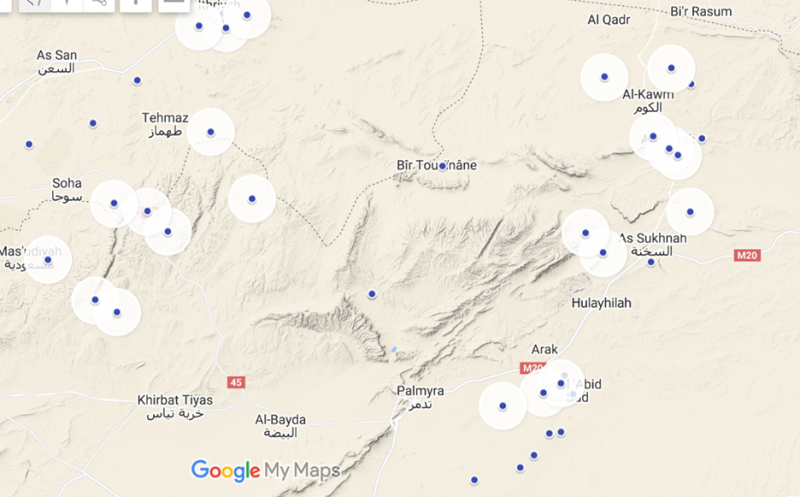
Map of locatable ISIS attacks in Homs (highlighted) in February 2024 alongside all other attacks in January 2024.
Hama
Significant ISIS activity returned to east Hama in January, when the group conduced five attacks in the province, three of which were deemed high quality. Likewise, ISIS conducted three high quality attacks in eastern Hama in February. This is the first time eastern Hama has had back-to-back months of three or more high quality attacks since spring of 2021, amid the regime’s semi-successful campaign to suppress ISIS activity in the province.
On February 3, pro-regime social media users reported skirmishes between the Syrian military’s 25th Division and ISIS militants south of Ithriya. On February 13, ISIS militants attacked a military barracks in the Duwayzin area of southeast Hama. Local pro-regime pages reported the deaths of eight soldiers and wounding of four others. ISIS later claimed the attack. On February 22, at least one civilian was killed by an explosive device outside their village. The next day, two soldiers were killed in the Ithriya countryside while looking for truffles. ISIS later claimed the attack, claiming to have executed one of them. On February 24, ISIS militants attacked a regime position north of Jubb Jarah, along the southeast Hama border with Homs, killing six pro-government fighters. ISIS later claimed responsbility for the attack, saying that three additional soldiers had escaped to the nearby barracks during the attack. That same day, five truffle hunters were shot to death in the Tel Salama area. On February 27, an attack killed one local pro-government fighter and wounded one in an attack north of Jubb Jarah.
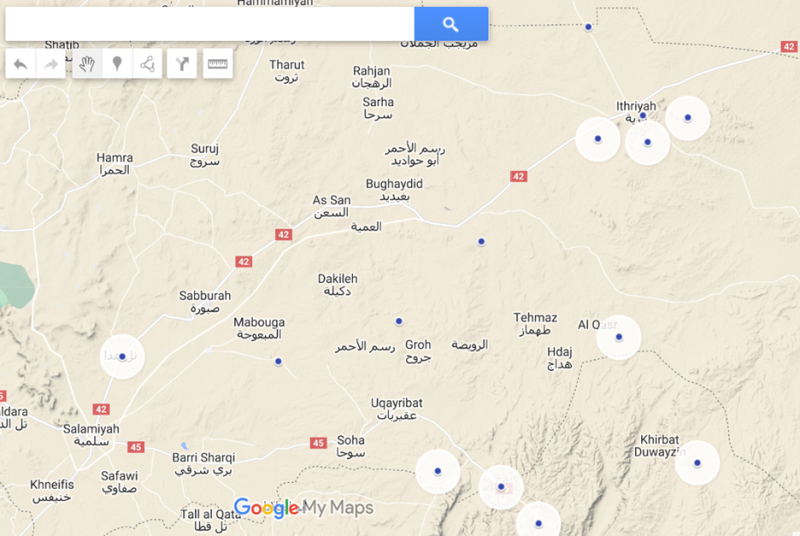
Map of locatable ISIS attacks in Hama (highlighted) in February 2024 alongside all other attacks in January 2024.
Looking Ahead
The heavy use of Syrian and Russian airpower in January successfully blunted ISIS’s operations south of Palmyra. However, the group appears to have quickly shifted focus north, maintaining a high tempo of attacks both in the Jubb Jarah area and around Taybeh. The first is interesting in that, while it has seen ISIS activity for several years, Jubb Jarah has never been a place of consistent attacks. The second is important because ISIS cells continued to pressure Taybeh despite repeat Russian aerial interventions. The evidence continues to point to one of two conclusions: either ISIS leadership is desperate for a major victory in central Syria and willing to suffer significant losses for it, or the group has managed to replenish its manpower enough over the past two years that it now has the capability to take on riskier battles.
Yet even outside of Homs, the insurgency continues to trend in the wrong direction. Two more assassinations inside Mayadin, the group’s ability to repeatedly target civilians in western Deir Ez Zor, and their continued hold on the Zamleh area of Raqqa point to a general degradation in security across the region. Early in March 2024, the regime deployed a significant number of Liwa al-Quds reinforcements to Deir Ez Zor—Liwa al-Quds Facebook pages claim 7,000 fighters now reside in the Badia, while videos of the staging grounds show many hundreds. The overall commander of the pro-regime militia has also arrived in Deir Ez Zor to reportedly plan and oversee a new anti-ISIS operation. It remains to be seen, however, if the regime with its Iranian allies on the ground and Russians in the air, can reverse the past several months of successful ISIS expansion across the Badia.
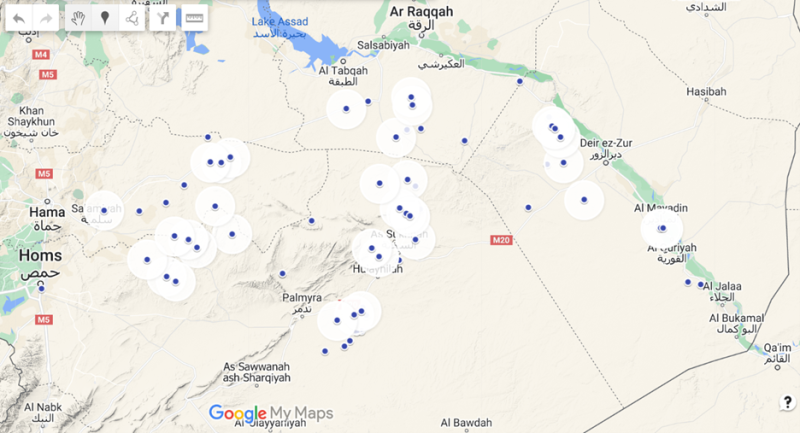
Map of locatable ISIS attacks (highlighted) in February 2024 alongside all other attacks in January 2024.
*High quality attacks are defined as attacks behind frontlines, those that result in seized positions, target regime officers, involve coordinated attacks on multiple positions, fake checkpoints, ambushes on military convoys, or attacks on checkpoints that kill at least three soldiers or lead to POWs.
 Eurasia Press & News
Eurasia Press & News
